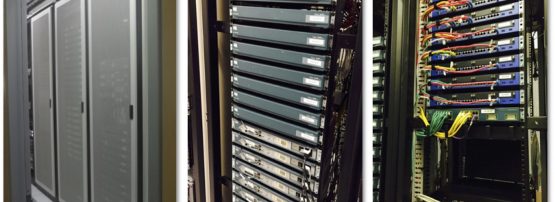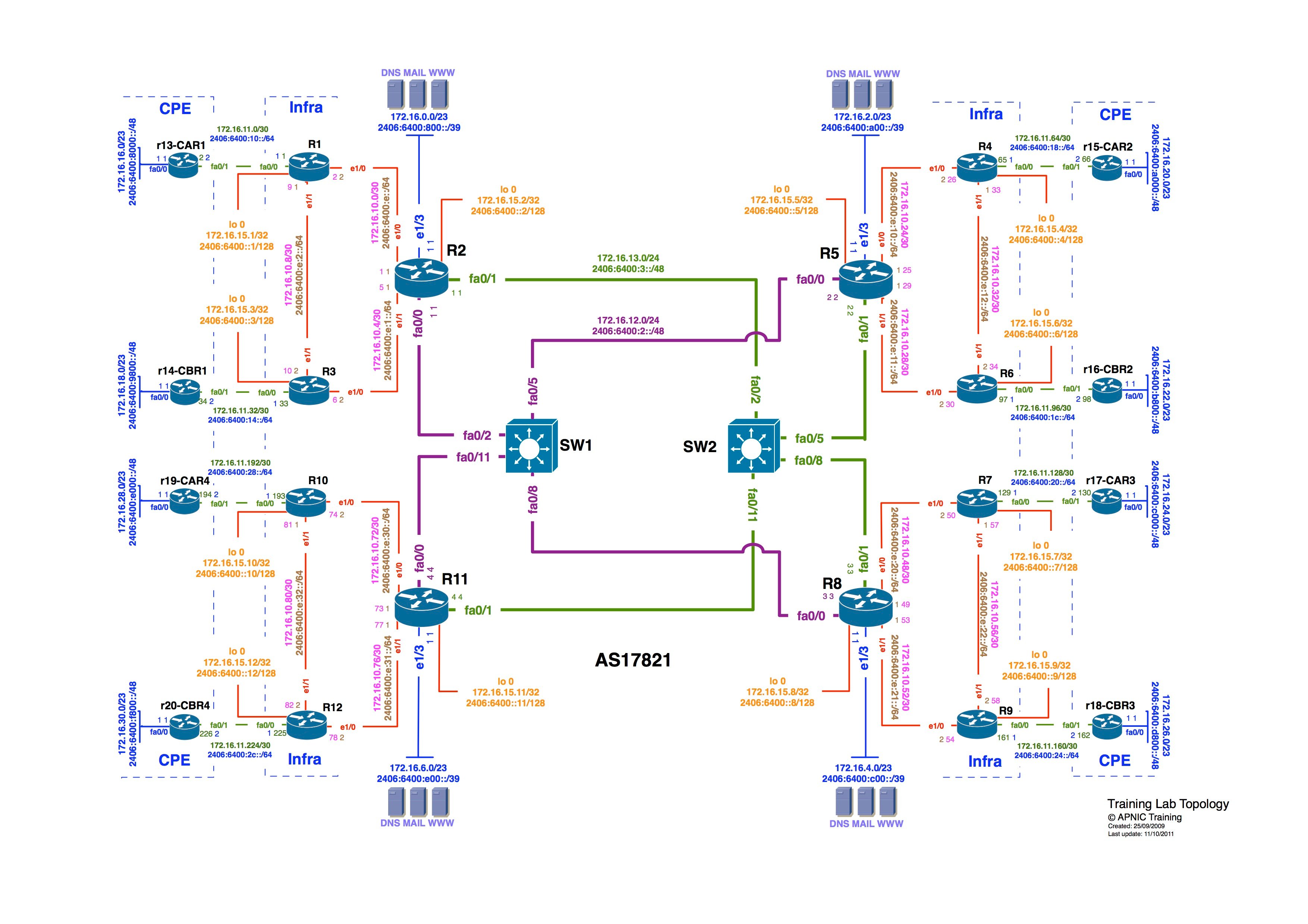
In some of my earlier posts, I’ve talked about the increasing demand for Internet operations training in our region and how APNIC is working to meet this demand – for example, through our Community Trainer program and updated, hands-on training content.
One unique feature of our workshops is our training lab, which we’ve been developing for several years and is rather unique in the industry. In this post, I‘d like to share with you some of the upgrades we’ve made to our lab infrastructure and how it satisfies a significant expectation of operational training needs.
Continually upgrading our lab’s infrastructure
APNIC’s training lab has become an increasingly important educational tool, which can be remotely accessed and directly used by students during various APNIC courses. To increase its usefulness, the lab has undergone several upgrades to introduce infrastructure from multiple vendors – we currently support Cisco, Juniper and Huawei. Lab upgrades are ongoing and we’ll add other vendor support in the future.
During our most recent upgrade, we replicated the infrastructure of a small ISP connected to the Internet. It has a connected customer access network, data centre and Internet Exchange Point (IXP), and complies with necessary Best Current Operational Practices (BCOPs) and RFC standards configurations. This allows students to practice the theory that we teach during our training on an operational network.
To support vendor neutral, open-standard technology training, this lab now includes a multi-vendor configuration of around 36 routers, plus numerous servers, switches and other equipment.
Developing a real-life ISP network that students can experiment with
In the training lab, we have built a regional ISP topology of four main operating regions, similar to a tier two ISP. For simplicity (and to keep it small) each region has only two POPs and one core router.
In each POP we have one enterprise customer connected using a multihoming connection topology. A data centre network is connected to the core routers for each region. POPs are connected to the core using a metro-ethernet ring. Each enterprise customer network in the lab is then connected to an IXP switch. Regional core routers are interconnected using a redundant ring topology, which is similar to a submarine cable connection for most of the large ISPs in this region.
In brief, these are all the components we normally find in a network today.
The main design consideration of the training lab is to provide participants with a similar type of work environment to what they would find in their workplace. Using the lab, participants learn the technology and how to build and operate this large infrastructure. Importantly, they will be able to understand the key learning objectives, for example: design and architectural best practices; how to manage multihoming; IXP peering; dos and don’ts recommended by industry experts and so on.
It’s very important to work on a real network with all the required components to properly comprehend these operational skills.
Most importantly, the lab is purpose-built with necessary precautions in place to ensure there is no impact on other networks if a student breaks the live network while they are experimenting during the workshop.
Did you know we now offer advanced courses?
The training team is now conducting a number of extended technical workshops on Advanced Routing, IPv6 Deployment, Network Security & Incident Handling, DNS/DNSSec Deployment, MPLS, and SDN/NFV, as well as a number of sub-courses on each of these topics. Hands-on exercises are developed based on the same network topology in the lab.
If a participant has attended an earlier workshop, for example on routing, the advanced workshop builds on similar lab exercises and topology of the basic routing workshop. The way the training courses are structured, engineering professionals can create a career development plan by attending several APNIC technical workshops.
We are continuing to enhance the features and functionalities of the training lab and our courses as we work to meet current and future demand. If you have any questions about our lab or our workshops, please leave a comment below.
The views expressed by the authors of this blog are their own and do not necessarily reflect the views of APNIC. Please note a Code of Conduct applies to this blog.

